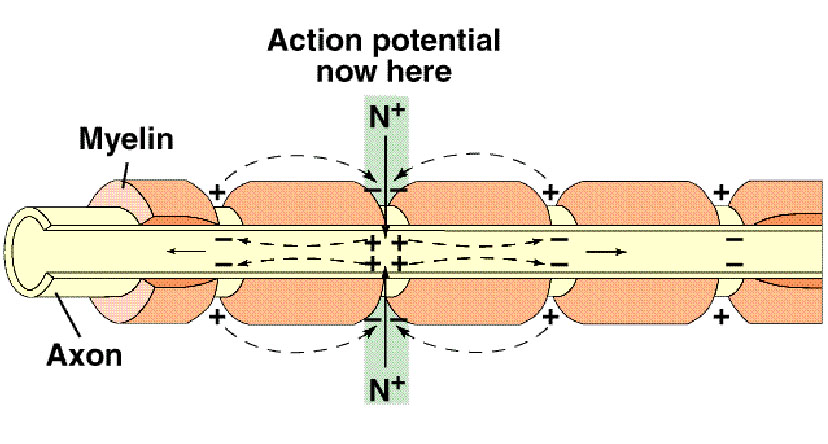- Some axons in the Central Nervous System (CNS) and the Peripheral Nervous System (PNS) are surrounded by a myelin sheath and are known as myelinated axons. The myelin sheaths in the PNS are formed from the Shwann Cells. In this process the Shwann cells roll around the axon. Each Shwann cell covers around a 1mm of axon with each adjacent Shwann cell leaving a gap between the cells that is not covered by myelin (Nodes of Ranvier). Myelin is principally the rolled layers of the bilipid membrane of the Shwann cell and as such is pricipally phospholipid.
- In the PNS, the myelin sheath is produced from oligodendrocytes.
- As the myelin sheath effectively acts as an insulator, the nerve impulse in a myelinated axon travels by jumping from one node to the other.
- Apart from increasing the speed of the nerve impulse, the myelin sheath helps in reducing energy expenditure as the area of depolarisation and hence the amount of sodium/potassium ions that need to be pumped to bring the concnetration back to normal, is decreased.
